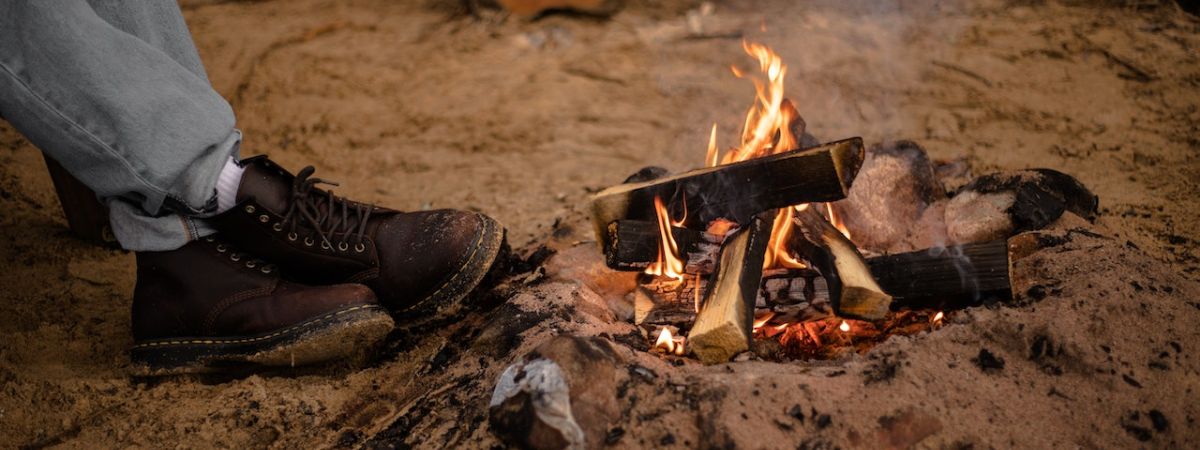
Leather Manufacturing: Good Practices And Things To Avoid
Being one of the determining elements of the quality of a pair of shoes it is normal to look into the Leather manufacturing. Obviously it is not the only one, of course. But without good leather, even with all the goodwill in the world, your shoes will not last very long. As much as recognizing a good assembly or a beautiful seam is relatively simple, as much recognizing a good leather is much more subtle and complex.
There is no miracle test, no clear, and precise answer. I do not pretend to be an expert but as I have spent quite a bit of time in the workshops and tanneries where I have been able to discuss with professionals in the sector I will try to give you some leads.
In this first part, we will focus on the manufacture of leather which conditions its quality. One night, over a drink, I had a discussion with a friend on shoes and leather goods (especially leather belts). He believed that quality leather should be smooth and shiny. All the other leathers are less good. When I saw how this idea was ingrained in his head I said to myself that he should not be the only one. With great reinforcements of marketing campaigns, certain brands had succeeded in making him believe anything.
I know that this article will have very little weight against these behemoths. But it has the merit of being there and allowing those who wish to know more about this material with a thousand faces, mysterious and fascinating, that is leather.
Leather manufacturing: from breeding to tanning
Upstream of the tannery (which will transform the skin into leather) there are several economic sectors that are players in what is called the “leather sector”.
Their influence is great on the quality and availability of the raw material.
Note: all that follows is not necessarily true for so-called exotic skin: alligator, python, stingray, etc.
Breeding
In the case of common leathers (calf, goat, lamb, cowhide, etc.), the skins, for the most part, come from farm animals.
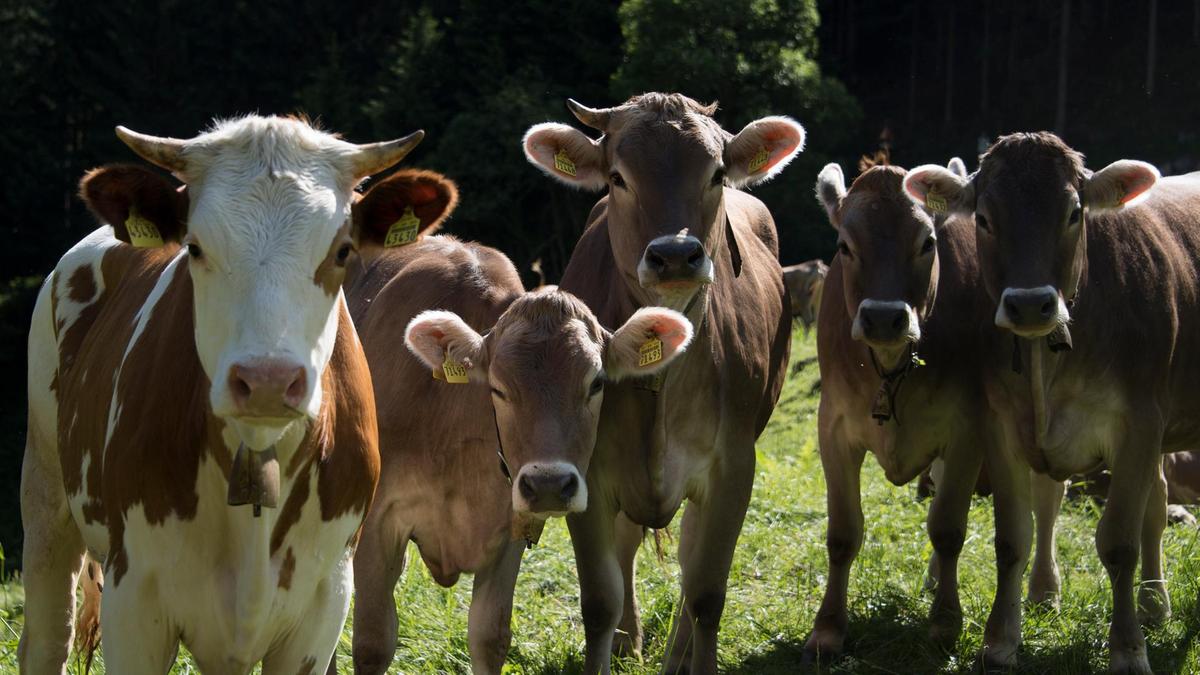
Of course, these animals are not raised for their skin (unlike some reptiles) but to meet the needs of consumers for meat, milk, or wool.
This stage of leather production is essential because the breeding conditions have a direct impact on the quality of the final product!
You don’t like buying meat/eggs from animals that have been bred, poorly maintained, fed with questionable flours, sometimes poorly treated, etc.
Because, beyond the cases of conscience for some, we all agree that this has an influence on the quality of the product.
Well for the animal’s skin it’s the same thing!
Forgive me the expression but an animal that has only the skin on the bones (as we can see in some countries) will not be able to give a beautiful leather.
While a well-fleshed animal, cared for and pampered will give, at the same time, very good meat and quality skin!
Take the example of parasites: an animal that is not treated/vaccinated risks being injured, being bitten and there will then be scars on its skin which will affect the quality of the leather made from its skin.
The sinews of war are money and profit.
You who read me and who have a pet, you are well placed to know that the price of a consultation – or worse of treatment – at the veterinarian costs the eyes of the head!
You can imagine the costs that this can represent on a herd.
And therefore the potential savings: what good is it to treat animals that go to the slaughterhouse?
The Slaughterhouse
Here, more than the quality of the leather – although considering the practices of certain slaughterhouses which make the animal live enormous stress which inevitably has repercussions – it is a question of the price.
The higher the demand for meat, the more skins are available to make leather, so the lower the prices (and vice versa).
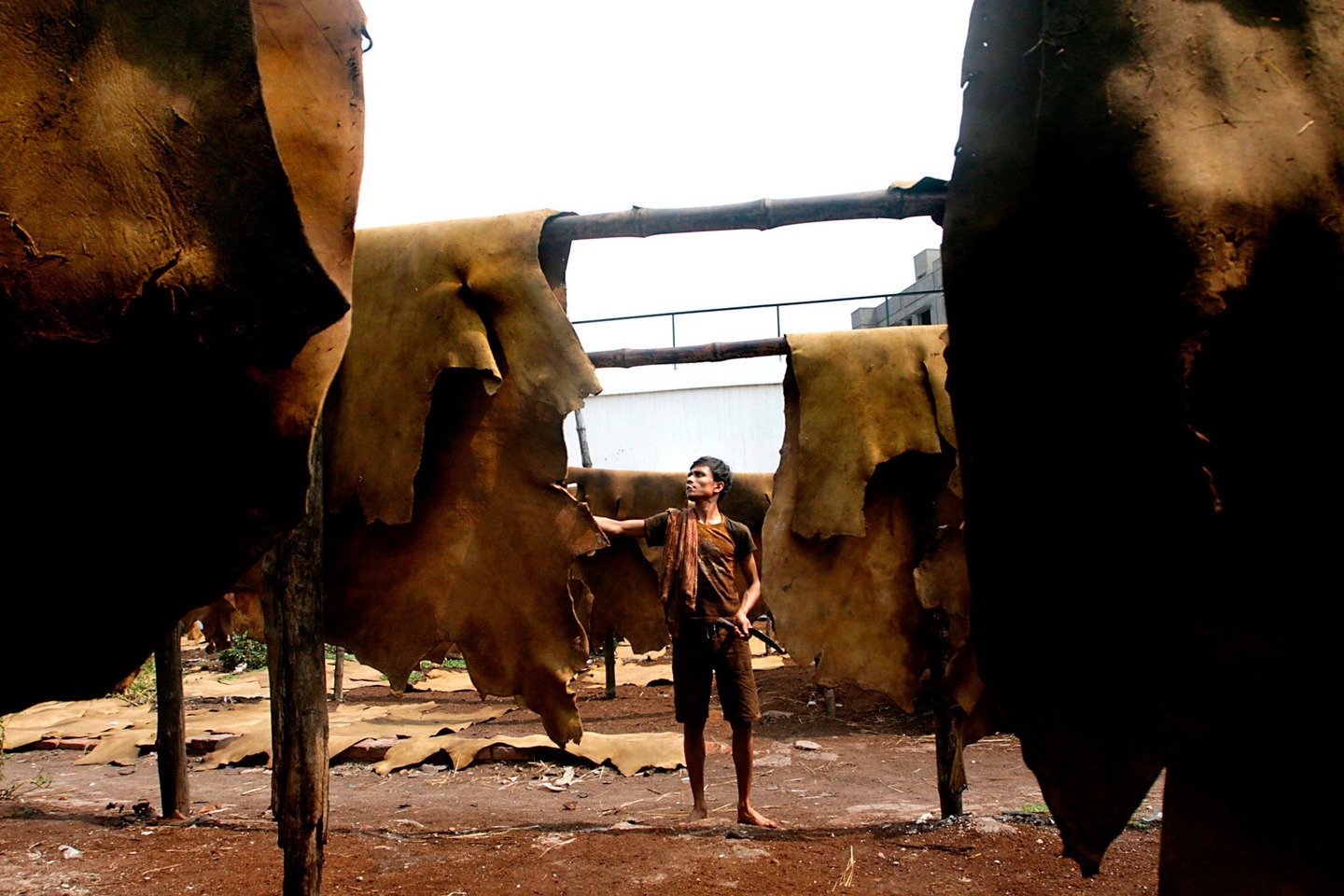
You could almost consider leather to be a waste recycling industry for the meat industry.
The trader in raw skins intervenes very quickly with slaughterhouses because the skins are wet products (3/4 of the weight of skin consists of water) and extremely putrescible.
If left this way the skins degrade in a few hours.
They must be quickly dehydrated in order to stop the development of bacteria and microbes that degrade the skin.
There are several methods:
- salting (it is the most used because it is more simple and economical)
- drying
- cold storage
- freezing
- etc.
The merchant will then weigh and sort the salted skins (called raw skins) in batches as homogeneous as possible in quality and weight.
This operation is very important because it is what allows the tanner to offer the most homogeneous batches of finished leathers possible.
It is then that the tanner buys the lots according to his type of production and the requirements of his clientele in finished leathers.
His experience will allow him to recognize the skins that will allow him to offer quality leather or an ugly split leather if that is what he is trying to do …
It is a very important choice which, again, will condition the final quality of the leather.
If I tell you that buying raw hides represents 40 to 50% of the price of finished leather, you understand even more easily that what happens before tanning is very important for the quality of the leather, right?
Even before the tanner, and his know-how, come into play there are already differences in quality.
This is why, for the leathers used in the manufacture of our shoes, we favor French tanneries like Degermann or that of Puy because the skins used to come from French calves raised in good conditions which allow obtaining the best leathers!
The Tannery
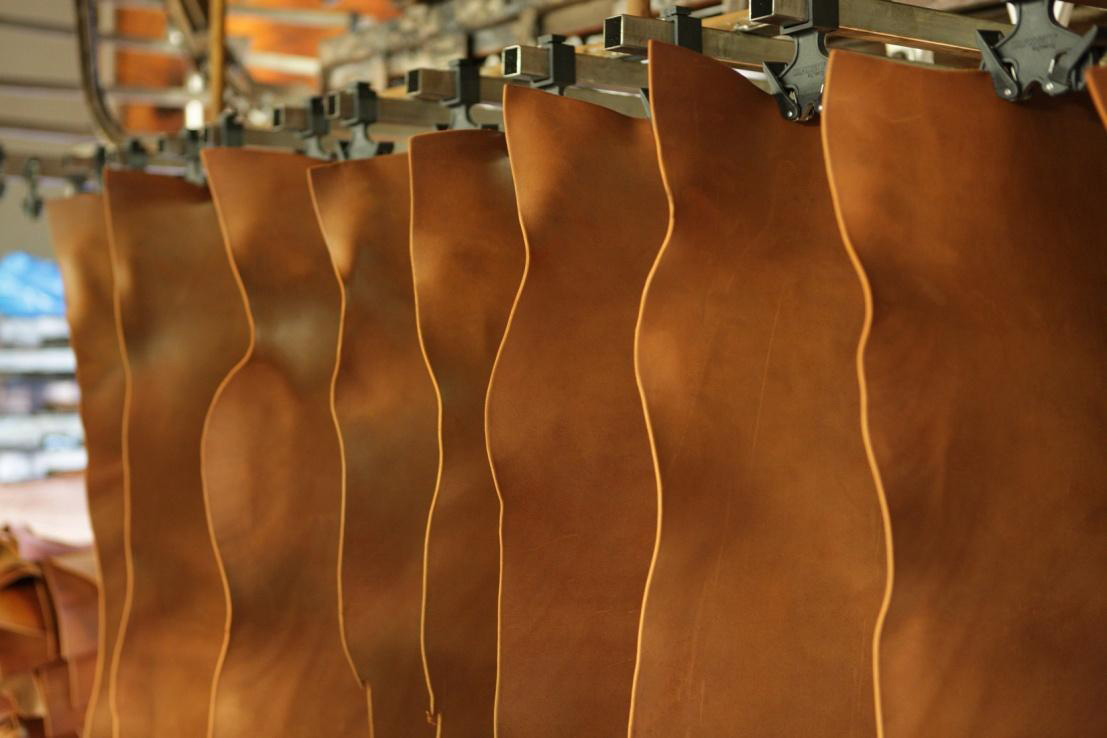
In general, the tanneries are specialized in a type of skin (lamb, calf, horse, etc.). It is this specialization that gives the name of tannery or tannery.
It’s like in a restaurant: are you skeptical when, on the same menu, you are offered a Savoyard fondue and a cassoulet?
Well for the tanneries it’s the same thing!
In addition, the leather industry uses products that can be very toxic to the environment and to humans.
By working with French tanneries, subject to very restrictive legislation on the subject, we ensure that the manufacture of the leather used to make our shoes respects the environment.
It is not without incidence on the costs considering the investments which the tanneries must carry out to respect these standards.
When you see the environmental ravages in India or Morocco, for example, you understand why, in addition to quality, it is advisable to buy shoes made with French leathers.
You treat yourself and in addition, you preserve the planet.
Transformation of the skin into leather
After selection, the tanner, therefore, returns with his lots of salted hides.
Then begins a long process (finally more or less long depending on the tanneries) process of transformation of the skin into leather.
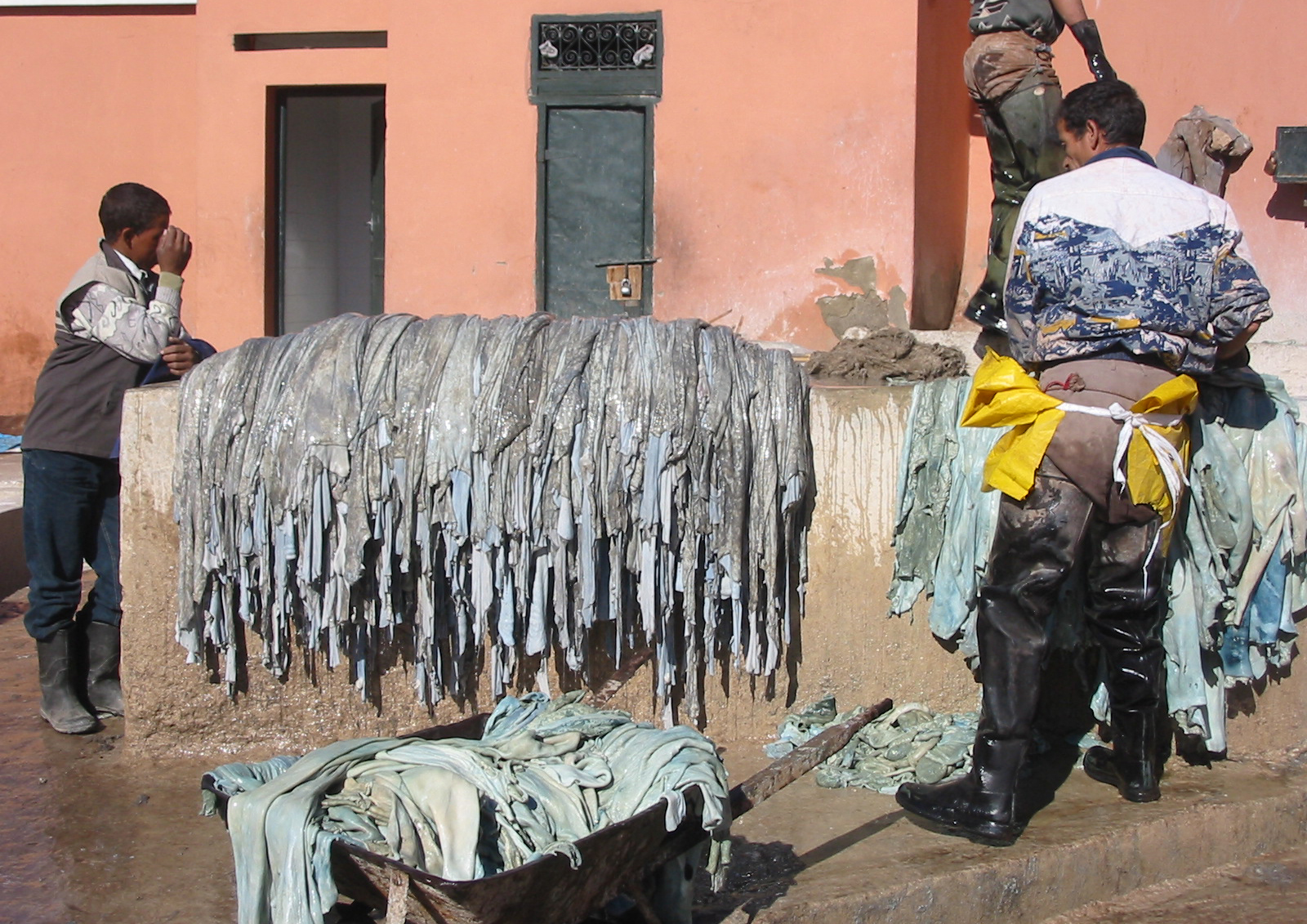
Leather manufacturing begins!
He has at his disposal a wide range of techniques and processes which will allow him to obtain very different finished leathers.
It is an art that relies on long-standing know-how associated with modern techniques.
It is the tanners who will give its characteristics to the leather:
- flexibility
- firmness
- thickness
- odor
- color
- texture
The total average time to transform skin into leather is 4 to 5 weeks.
It is AVERAGE!
Some do this much faster, others more slowly … with the results you can imagine depending on the case …
You should know that calf leather is not naturally flexible.
Well yes, it is necessarily more than that of the buffalo I grant you.
But, it is the tanner who gives its characteristics to the leather according to the transformation processes used.
Of course, it relies on the specific structure of the skins chosen – in general, the idea that we have of the animal gives us good indications on the characteristics of its skin – to get the best and thus obtain leathers that meet the requirements of its customers and the use they will have of them.
We have therefore seen that depending on the skin used (an alligator skin and that of a lamb do not necessarily react in the same way) but also of the desired result, the techniques and procedures are not the same.
However, it is possible to split the production of leather into 4 main essential phases:
- River work: skin cleansing.
- Tanning: transforming a putrescible material (the skin) into a rot-proof material (leather).
- Wrought iron: give the desired properties to the leathers (solidity, flexibility, etc.) and a basic color.
- Finishing: giving the leather its final appearance (color, relief, shine, etc.) and its surface properties (protection, etc.).
With the exception of the mechanical work, sorting and finishing phases – which are carried out dry – all the others take place in tanks filled, among other things, with water!
If in spite of everything you still think that water and leather do not mix well, I invite you to read my article on the 10 mistakes to avoid when caring for your shoes.
Of course, as from the start, the know-how and working conditions of the tannery will condition the quality of the leather.
Let’s dive into the details (in the specific case of bovine hides) to see what the tanner actually does and how it affects the quality of the leather!
River work
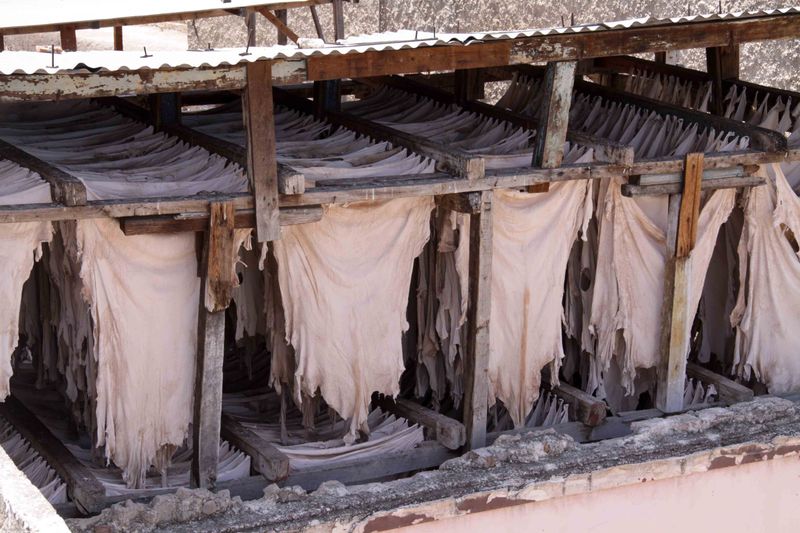
The tanner begins to work with salty but above all very dirty hides!
We cut up an animal and then salted its skin.
You imagine the head of what the tanner recovers.
You have to be damn imaginative to visualize the magnificent leather that we are going to obtain, right?
It is, therefore, necessary to start by cleaning them in order to remove all the unnecessary parts:
- the epidermis
- hairs
- soluble proteins
- subcutaneous tissue.
So we only keep the dermis (flower + flesh) of the skin.
It is also at this stage that the skin is rehydrated to restore its suppleness.
In chronological order, there is first the quenching (or re-greening ).
During this stage, we will restore the skin’s hydration level close to that of fresh condition.
It is also desalted and free of stains and soluble organic parts (beautiful words to speak of blood, pieces of flesh, and fat).
For this step, between 300 and 500% of the weight of the skins are used in water.
An antiseptic is added to prevent the putrefaction of the skin.
A large amount of water also serves to avoid the degradation of the flower and the fibers of the skin in the tank.
Then come the depilation and skinning.
Thanks to chemicals that destroy keratin (a specific protein in the hair), we will facilitate the elimination of the epidermis and hair.
Peeling consists of slightly degrading the fibers in order to make the skin more reactive to the tanning agents which will then be applied to it.
This is where the flexibility of the leather plays, in part: the more the fibers of the skin are degraded, the more the leather will be flexible.
It is then the fleshing of the skin. This operation is used to remove the subcutaneous tissues using a machine called… a skinning machine!
So we have a skin of which we have the dermis which will be transformed into the leather.
For chemistry lovers, you can dig out the deliming, jamming, and pickling stages which are used to remove basic agents (the skin is very alkaline) in order to avoid reactions during the tanning which takes place in an acid medium.
I do not detail them here because they have a minimal influence on the final product (but they are nevertheless essential)… and I will end up with a novel more than an article!
Tanning
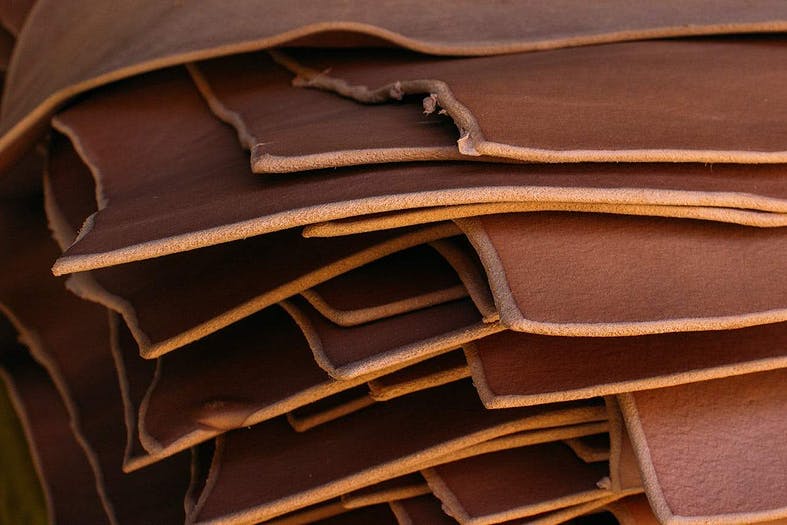
Cleared of hair and other residues, our skin is ready to be transformed into the leather.
We then begin tanning.
This involves fixing chemical agents in the skin to transform it into the leather.
We, therefore, transform a skin, very hydrated and putrescible into the leather which is poorly hydrated, rot-proof and resistant.
It is not a discovery for anyone there are several kinds of tanning agents:
- Chrome
- Vegetable tannins
- Synthetic tannins
It is, therefore, depending on the tanning agent used that we will talk about chrome tanning or vegetable tanning.
But concretely what are the differences between the two processes? Are you wondering?
That’s good, that’s what comes next!
1. Chrome tanning
It is the most widely used method in the world.
Over 80% of leathers are tanned in this way.
It has many “advantages”:
- fast (24h max)
- simple
- versatile
- cheaper than the others
It is with this process that we obtain the famous wet-blue (bluish-gray leather).
In tanneries that comply with French and European standards, this type of tanning has a very limited impact on the environment.
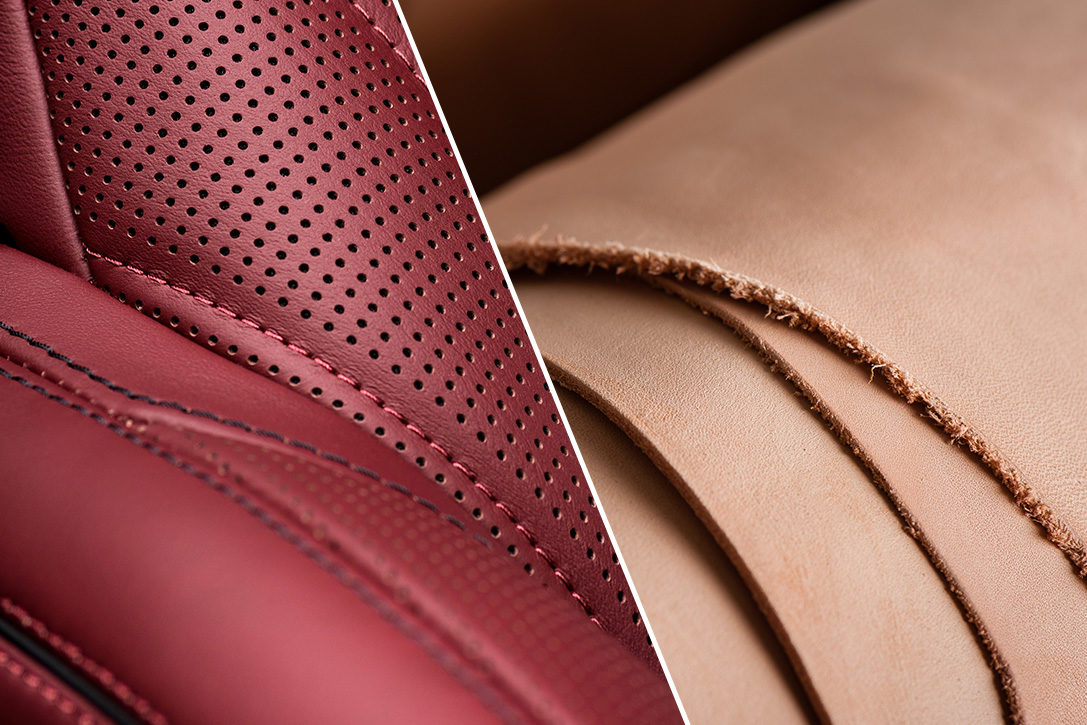
In other cases, however …
It consists in dissolving chromium sulfate in water and then making it penetrate the skin with stirring in a fuller (a rotating tank).
We then neutralize the acidity of the bath with baking soda which will fix the basic chromium salts on the fibers of the skin by forming stubborn bonds which will make it possible to obtain very resistant leathers.
Note: like you with your washing machine, some tanneries overload the fullers (for more output) with few products which allow them to reduce costs with the consequences you imagine on the quality of the leather.
Your machine -it is perfect when you get out of an overloaded machine?
2. Vegetable tanning
In fact, it is an improved version of the older forms of leather making.
Globally tanned leathers in this way represent around 10% of production.
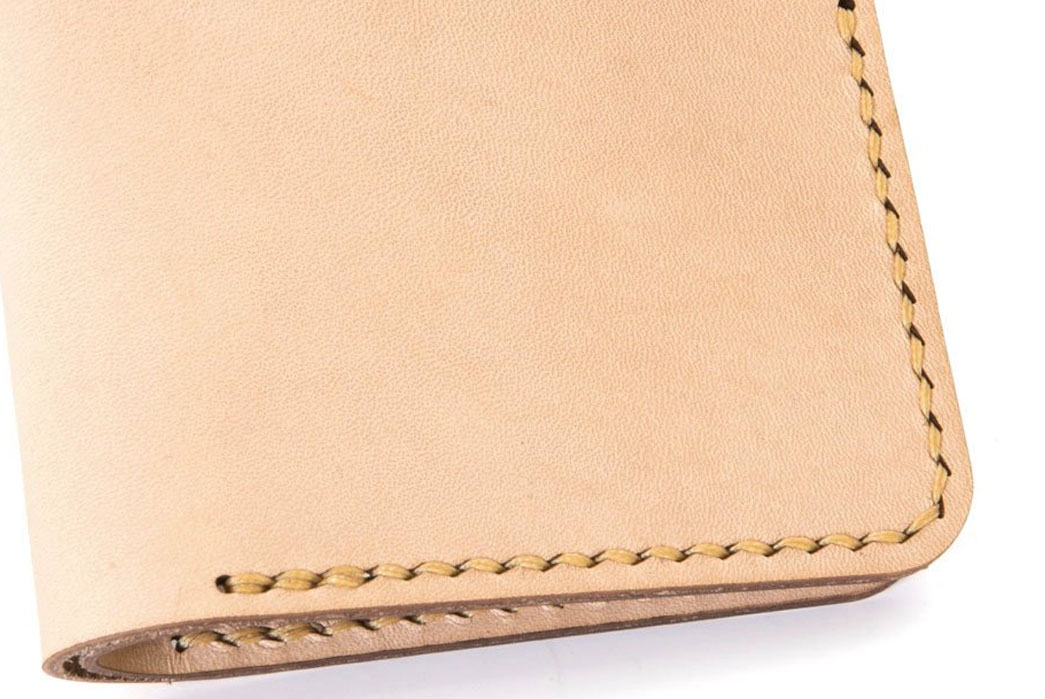
The tanning agents are in the form of concentrated powders (depending on the plant, their leaves, their bark, their roots, etc.) which are chemically improved in order to make them more soluble and reactive.
More complicated to implement than chrome tanning, vegetable tanning is longer and therefore … more expensive (it’s the same story)!
In the particular case of shoes we use a lot of vegetable tanned leathers for the soles (finally some brands use them a lot).
It is a very long process which will consist of passing the leather through 5 to 8 different tanks (containing increasingly concentrated tannin solutions).
It spends at least 14 to 30 days in each tank.
Leather production, therefore, takes at least 3 to 8 months and up to 12/18 months for extra-slow tanning.
These are the two best known and most used types of tanning.
Note: we have devoted a full article to vegetable leather if the subject interests you, I invite you to read it.
But there are others (tanning with aluminum, zirconium or synthetics) which make it possible to obtain very specific leathers or which have been developed in order to improve current processes but which remain less well-controlled, much more expensive and therefore very rare.
The wrought
We have turned our skin into the leather – and you must have finished your steak long ago.
But we do not yet have a product that can be used for making leather objects.
It does not yet have the necessary characteristics for this.
This is the purpose of this step.
In reality, it is not a single manipulation but the succession of several which will allow reaching the desired result by the tanner.
First, there is the spin. Our freshly tanned leather is loaded with water and it will pass through a machine with cylinders covered with felt which, with strong pressure, will make it possible to lower the water content of the leather.
Then comes the yard.
It is a strategic operation.
The tanner will judge each skin according to several criteria (possible apparent defects and their locations, thickness, size, etc.) in order to constitute homogeneous batches.
The consequence of this classification is that when you buy leather you have several choices (from 1 to 10 depending on the tanneries) which represent the quality of the batches of skins.
Note: there is no absolute classification. Depending on its commercial positioning, a tanner may judge a defect as downgrading while another does not. I let you, given the customers they have, guess how the skins are judged in the tanneries of Puy and Degermann where our leathers come from.
Some tanneries must then split the skins.
On one side a leaf containing the flower, on the other the crust.
Twice as much material to sell with the same quantity of skins.
It’s necessarily interesting, isn’t it?
Afterward, in terms of quality, this is not what everyone is looking for.
The skin is then neutralized in a fuller before removing all the residual acidity and facilitating the penetration of chemicals (yes it is very chemical leather… but at the same time you expected what to pass from skin of an animal to a luxury product?) of the following operations.
Before being dyed, the leather is, in certain tanneries, retanned (yes yes), this makes it possible to homogenize its characteristics within the same batch and to prepare it for dyeing.
We, therefore, influence the lending of the skin, the finesse of the flower and the firmness.
I do not repeat my blah on money, time, etc … you must have understood since … time …
This is then the stage called food.
To give suppleness to the leather, we will make it absorb fat (fish oil in general).
For shoe leathers, we will find 4 to 8% of the weight of the flat leather.
This step is carried out just after dyeing, often in the same drum.
Note: by adding more fat (20 to 30% of the weight of the leather) we will be able to waterproof it. We are talking about oily leather perfectly suited for making mountain boots…
The leather is then again wrung out and then stretched to reduce wrinkles and folds.
It’s drying time.
A very important step for the final quality of the leather.
It is a skillful dosage that the tanner must carry out: not too fast not to deteriorate the leather but not too slow either otherwise the tannery would have problems of profitability!
This is how he chooses the most suitable process among those at his disposal: hanging drying, vacuum, frame or on ice.
After drying the leathers may be slightly stiff.
We will, therefore, re-moisten them slightly and stretch them to give them all their flexibility.
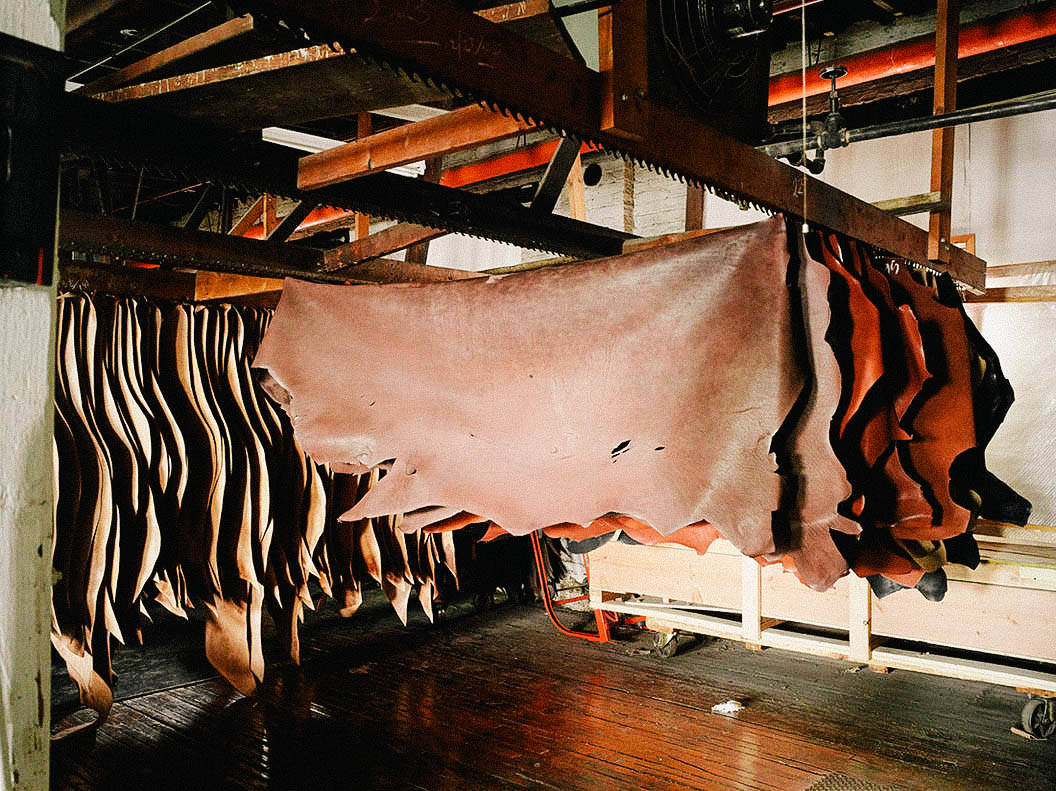
We went from a raw skin from an animal to a magnificent (more or less depending on the case) leather skin.
But have you ever noticed that there are leathers with a velvety appearance, others very shiny or others with a grain, right?
This is the subject of the last part!
Note: earlier I told you about your washing machine that you overload to avoid having to do two… it could also happen to you to save on laundry given the price it costs, right?
Well, some tanneries do the same thing.
The products used are very expensive and they do not put enough (savings, profitability, blah blah… always the same refrain) so much so that the leather is only tinted on the surface and not in-depth.
We can then see, on the edge, the middle layer which is always bluish gray.
It is there that the vice is pushed very far: some go as far as painting the edge of the skin or better make a small fold sewn so that it is not seen!
Finishing
So we end up with leather that has all the properties that the tanner wants: flexibility, thickness, etc.
However, leather is not usable in this state for the simple reason that it is not necessarily beautiful but it is above all very fragile.
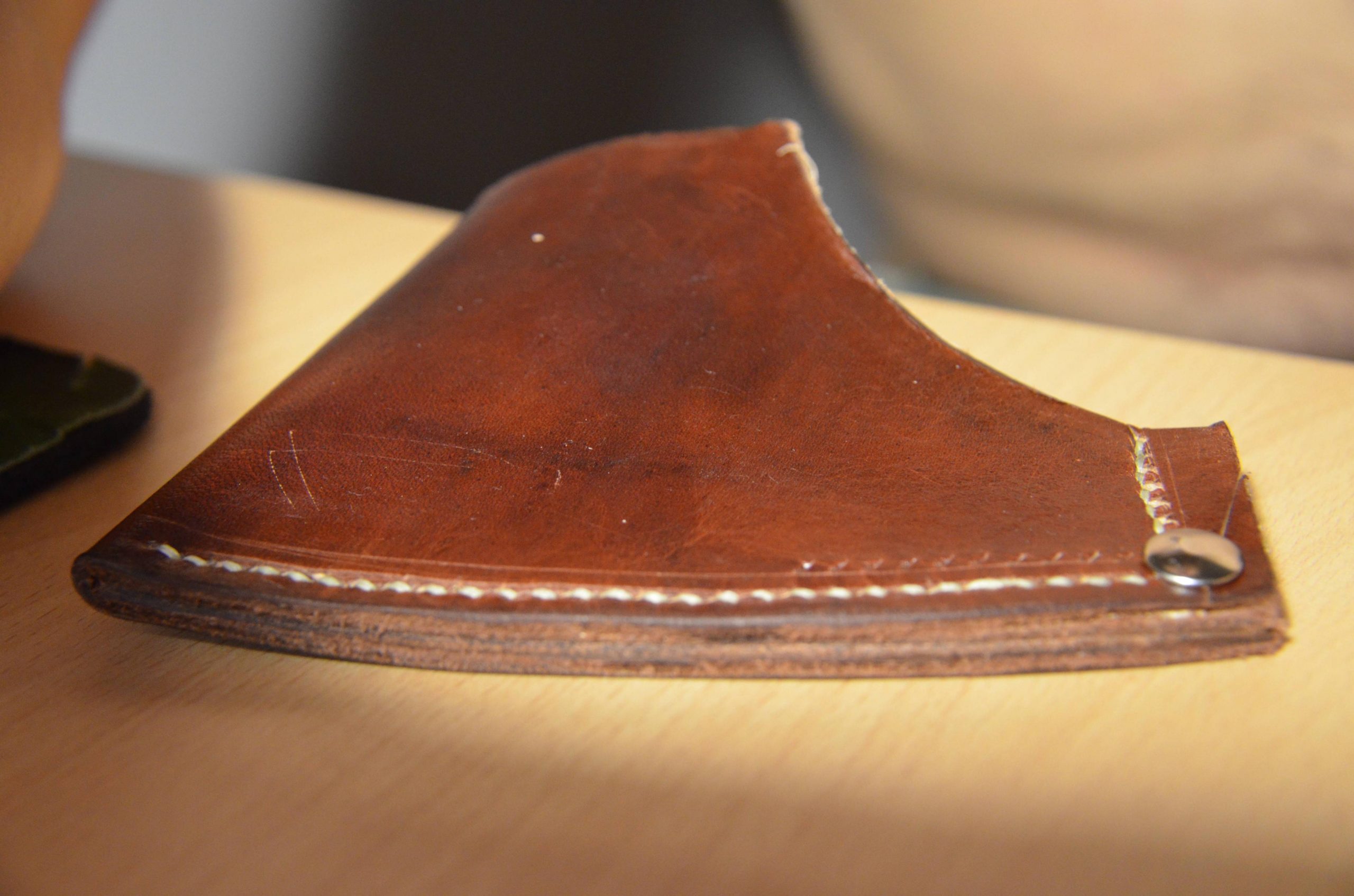
The tanner will, therefore, more or less improve the aesthetics of the skin.
More or less depends on the starting quality of the skin.
You understand why, well before the start of the tanner’s work, it is very important to know the origin of the skins and therefore the breeding conditions.
Before protecting it, the tanner will more or less correct the skin.
Depending on the appearance of the surface (no flaws or presence of flaws) it will sand (or not) the leather.
The most beautiful skins are not corrected and we speak then of full grain leather.
A full grain leather without finish will make beautiful patinas on your shoes .
It is the rolls of leathers, the thickness of the skin is not changed and we will then have very high quality leather…
This is the one we use on all of our shoes.
Then the more there are defects the more we will sand the leather to obtain a presentable surface.
We therefore reduce the thickness of the skin and make it more fragile.
On skin with few defects the sanding will be light and we will obtain a leather called flower-corrected.
If the skin is really of very poor quality we will then sand it deeply and get what is called split leather (which is technically no longer leather and it is even forbidden by law to call it leather).
In this case, the finishing will aim to “garnish” the skin and imitate the flower in order to… take for consumers the consumers that we are!
However, there is only one case where sanding is not used to camouflage poor quality skin: the velvety leathers that are velvet and nubuck.
What is commonly called suede or suede leathers are actually skins that have been sanded to give them this appearance.
In the case of nubuck, the sanding, flower side, is very light and will not hide any skin defects.
So if you are in the presence of real nubuck it is because you have before you a very good quality leather.
We obtain a leather with a peach skin appearance and very fine and short “hairs”.
For velvet, sanding is done on the flesh side (this is what makes the difference between these two types of leather).
To make velvet we generally use skins with a coarse flower but which we do not want to correct (as explained above) to keep a leather with good mechanical properties.
As we work on the flesh side, the appearance of the velvet will depend on the type of skin used (goat, veal, pork, etc.). But it is generally less thin and flush than nubuck.
For these two kinds of leather, there is no protective layer.
You don’t notice anything in particular?
We sand the skin to improve its surface appearance (corrected flower or even crust of leather) but we also sand it to obtain a velvet or nubuck which are made on beautiful skins just to obtain a velvety appearance.
How to make the difference?
With manufacturers who are inconspicuous, it is even more complicated because they go so far as to carry out a fine sanding of the crust in order to obtain a velvety appearance close to nubuck or velvet.
Be careful!
You can generally recognize a velvet crust because the appearance is less fine and flush than nubuck…
In short, back to our skin.
It is now ready to receive finishing.
If we are in the presence of full-grain leather with very little defect then the tanner will apply a finish called pure aniline (this is an abuse of language because the chemical aniline is no longer used because of its toxicity ).
It is, therefore, a “very very” thin transparent layer that will make it possible to enhance the natural appearance and the incomparable feel of a full-grain leather of very good quality.
If we are in the presence of full-grain leather with defects – but that the tanner did not want to correct to keep the designation full grain – of a corrected grain or a crust, we will achieve a pigmented finish.
We will apply a more or less thick and covering layer depending on the importance of the defects to hide. The touch is not at all the same as a full aniline full-grain leather.
We can also achieve an intermediate finish which we will then call semi-aniline (or sometimes just aniline to sow doubt in people’s heads).
It is also possible (often with very good quality skins) not to apply a finish at all.
We then speak of natural leather.
The touch is totally inimitable, very silky but the leather is very fragile and very sensitive to external aggressions (light, friction, stains, etc.)
Our leather is therefore almost finished …
Unless you want to give it a particular look or insist on a specific characteristic.
In this case, we will have, in addition, a mechanical finishing.
This is how we give a more marked grain to leather… and thus make grained leather
Without going into too much detail here is what we can do:
- Satin finish/graining: the leather is passed through a heated press with smooth or engraved plates in order to reproduce a pattern (reproduction of the crocodile, stingray appearance, etc.) or to smooth it out.
- Dry coarsening: allows to accentuate the natural grain but also to soften the leather.
- Smoothing: provides a very smooth and shiny surface (for example box type leathers)
- Binding: the leather is folded flower against flower in order to create fine wrinkles on the surface
This is how, after 4 to 5 weeks in general, we get leather.
Reading this article it is clear that the possibilities are almost endless in the manufacture of leather.
The only limit, here too, is the imagination of the tanner and his customers.
We also note that it is possible with poor quality skin to make a leather whose appearance – purely visual – will not have much to envy to a full-grain pure aniline or natural leather.
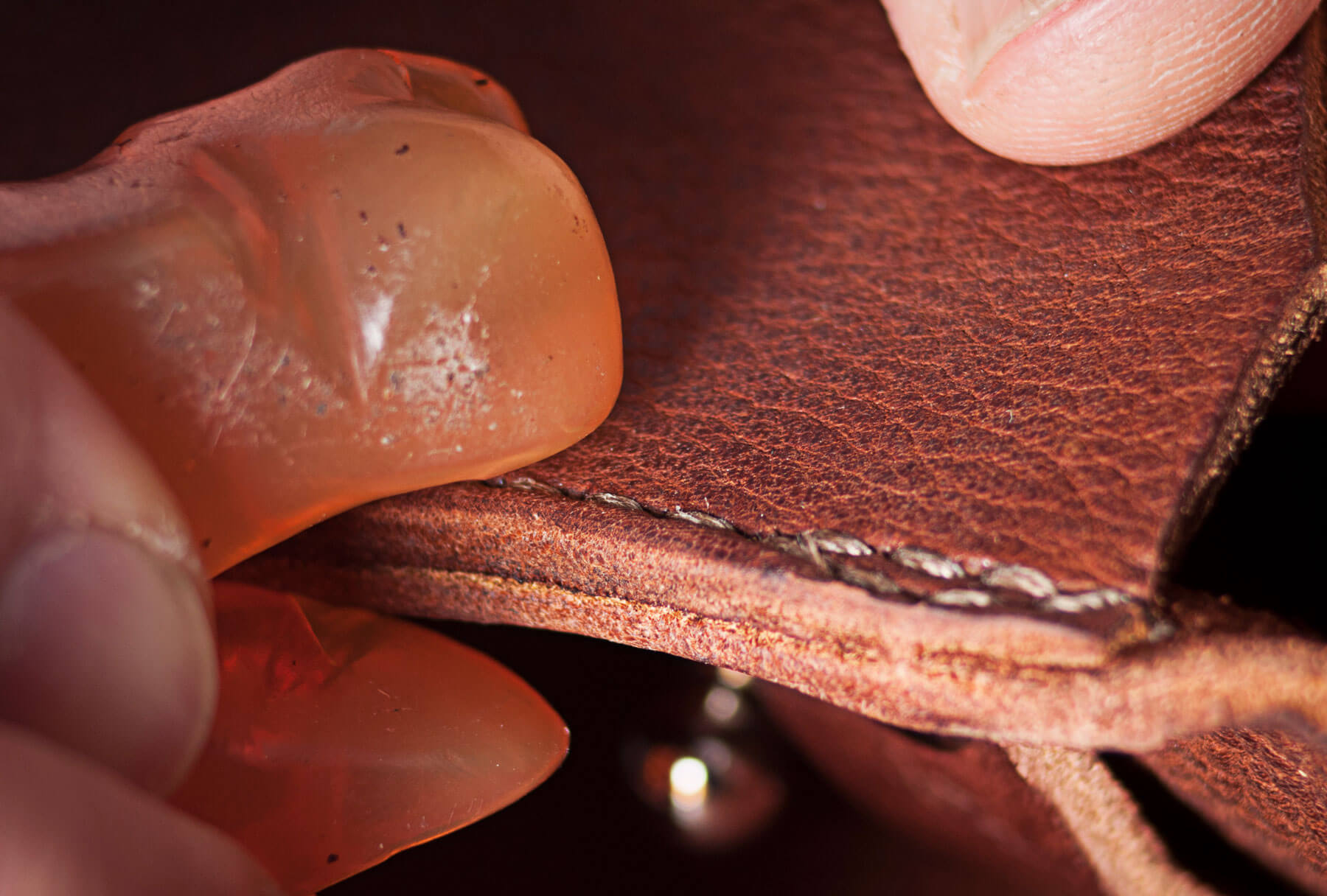
A house that works with beautiful leathers will be transparent about the origin and the type of skins used because they enhance the product.
We are very proud, for example, to work with the tanneries of Puy and Degermann whose calfskin is among the most renowned in the world.
Be careful all the same, in order to make a figure, reputable tanneries can sometimes offer batches of lower quality.
If the source and the type of leather are not clearly displayed then you have to start having doubts because it can hide something.
If a brand has nothing to reproach itself for, why hide the origin of its leathers?
Probably because they are not of very good quality or manufactured in conditions that are not respectful of people and the environment (which generally goes hand in hand).
This is when things get complicated for you.
But I talk about all this in more detail in the second part of this file where I give you some tips on how to recognize good leather.
I will end this article with a summary of the different names and characteristics of leathers that you may come across.
Leather manufacturing: the 4 main families
- Full-grain leather with aniline finish: It is a leather made on the skin with very few defects of which we have kept all the thickness. We applied a transparent and thin finish to keep the leather looking natural. They are very beautiful leathers, appreciated by connoisseurs and with an inimitable appearance.
- Full-grain leather with pigmented finish: We have kept the entire thickness of the skin but to hide the flaws we have applied a more or less thick opaque finish. We have a well-protected leather, easier to maintain but with a less natural appearance.
- Corrected grain leather with pigmented finish: The grain of the leather has been sanded to improve its appearance and then a thicker opaque layer is applied than the previous leather. We still lose a little more the aspect and the natural touch.
- Pigmented crust finish: Pn, therefore, sanded very deep (or split the leather) and a very thick, opaque layer was applied to it to garnish the leather. We have an aspect close to the previous leather but it is actually not very resistant and will deteriorate quickly even if it is well maintained. It is a low-end product.
If you only have to remember one thing, it is that a quality shoe must be made with full-grain leather with aniline or natural finish. You cannot cheat with this type of leather: the skin has very few defects, it has not been sanded or covered with a thick opaque layer.

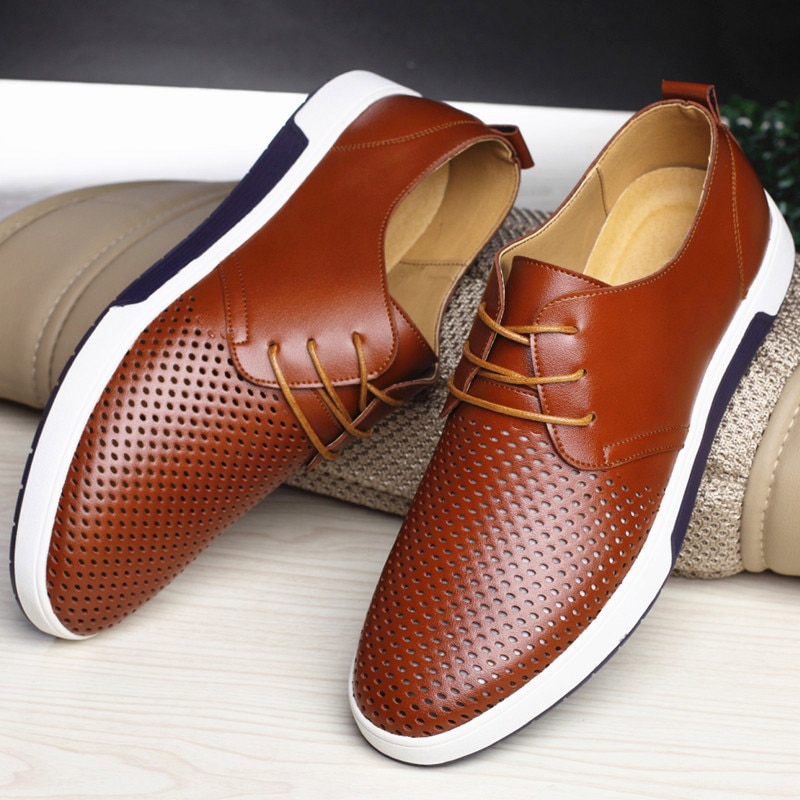
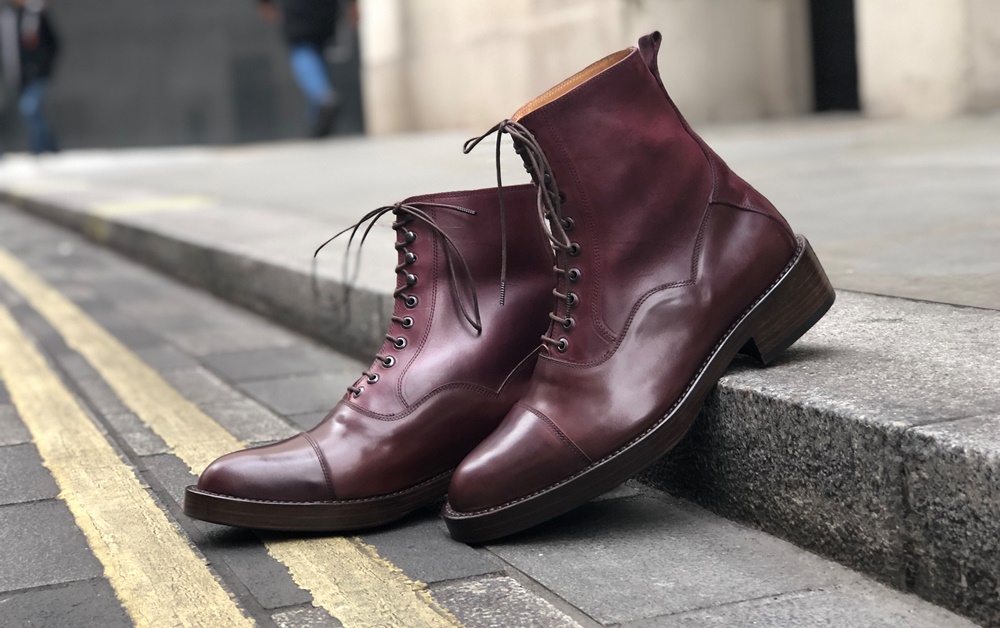
Leave a Reply